It’s been a week of hard work in the garden.
We have at last been able to burn the branches torn down from the trees during the storm on 26 July this year. We need to get authorisation from the Mairie (our local authority) to burn the branches in the garden so we were all set for this Friday.
Of course, all the larger wood was cut up and we first brought it up in barrow loads for storing. A huge pile of small branches had been left on the grass and even more was distributed under the trees.
All it needs now is a cut with the mower and I will be very happy to forget about the mound of branches at the bottom of the garden. I did notice it was the favourite haunt of a wren who used to fly out of it when I passed by.
I don’t know if it is the same one that paid us a visit.
She came into the utility room.
I can’t say I blame her as it was a very cold day.
She did no seem in the least perturbed by her visit to the house but I do not know why she was picking up dried leaves to fly off with. It is not nesting time unless they make a place to roost when it is cold.
Our resident ring dove is keeping watch over the Kaki fruit as they ripen. There is not much fruit this year, perhaps due to the late spring. It looks as if it is going to be a race between us and the dove to see who’s going to be the first to get them when they are ripe.
There used to be a Forsythia beside the Kaki tree but this has been removed to allow more sun on the border for flowers.
As I cleared the border I lifted a stone from the stump of an old Hibiscus to reveal the little toadstools hidden underneath. I was struck by the symmetry and force of their growth.
I noticed another fungus when I was gathering the wood at the bottom of the garden. It is an attractively coloured fungus that I have seen before on the dead wood in the garden. I think it may be Tremella mesenterica.
On a brighter note our cotoneasters are full of bright red berries and are doing their bit to brighten up the garden. They seem to thrive here on minimal water and care.
Crazed with our success at replanting our cherry tree last year, we decided to move a pear tree this week. It has not thrived well in the front garden and its removal will give more light to the border behind it.
Its roots were not too big and it was a one man job to get it into the barrow. No need to get the car involved this time, which is just as well as it would have been difficult to manoeuvre it into the front garden.
It looks much happier in the back garden. It has not given us large crops of pears (Williams) but I valued it more for the beautiful blossom that it gives us every spring.
Gosh! That was a near thing, I nearly posted a blog without a picture of a bee!

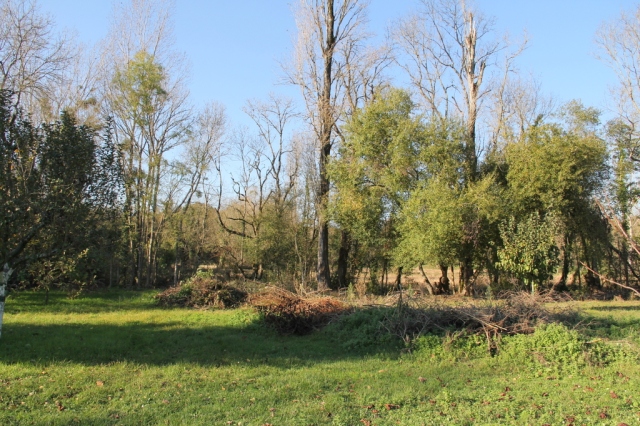
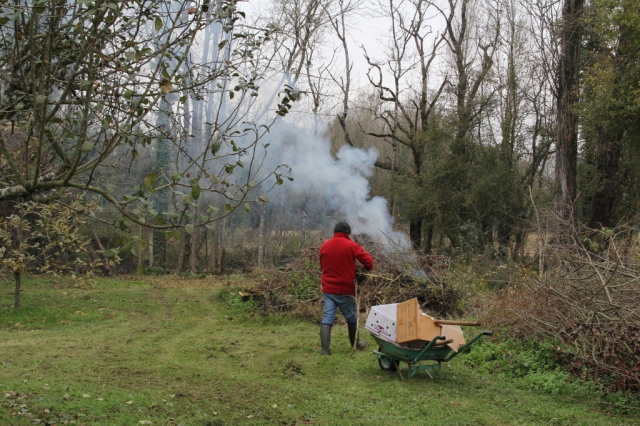
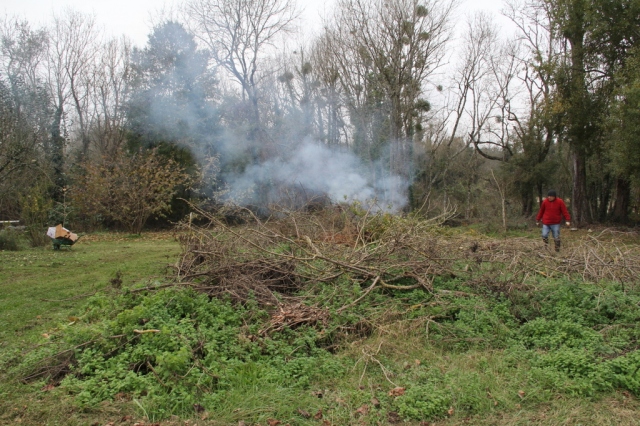
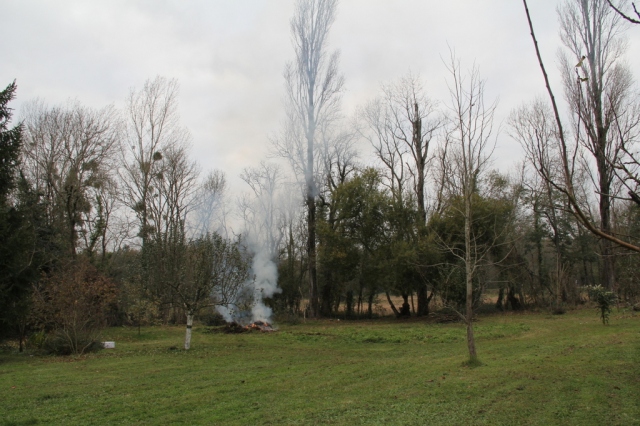
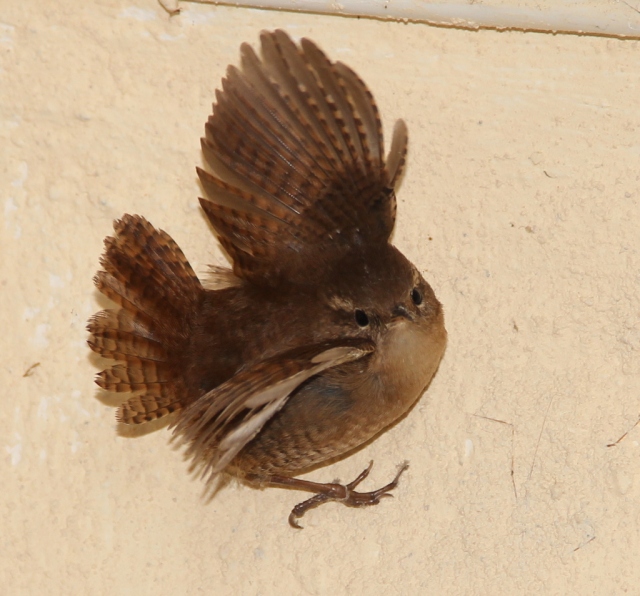

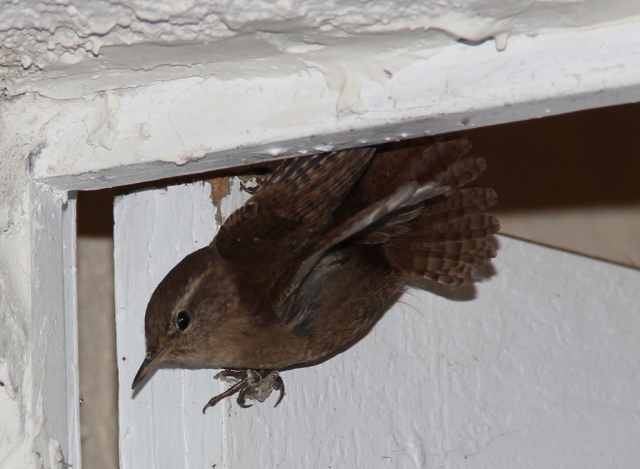

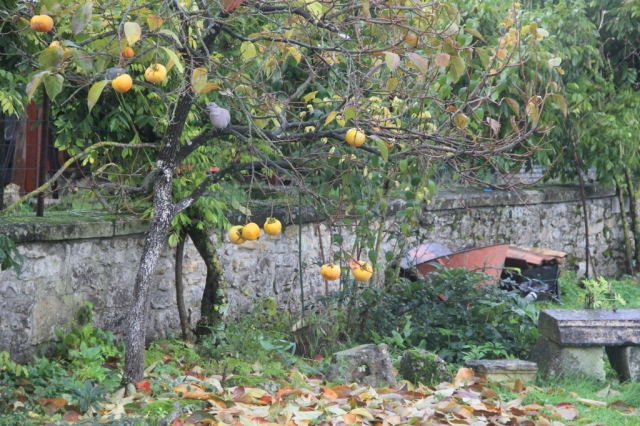
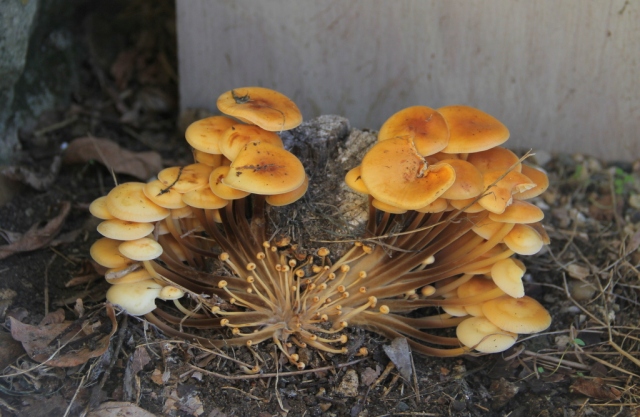
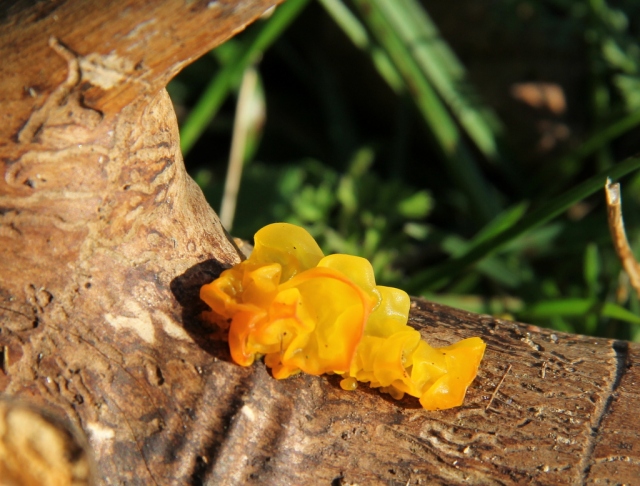

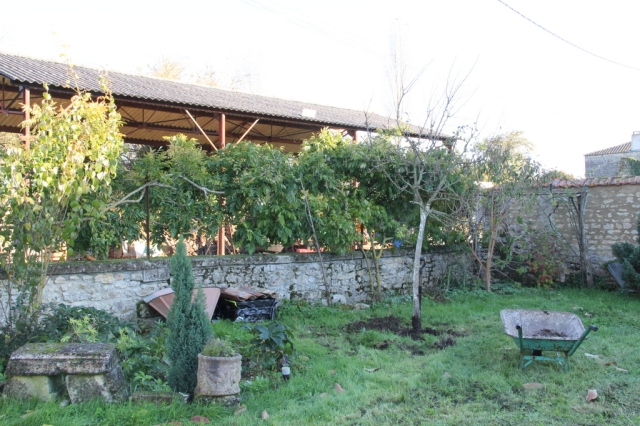
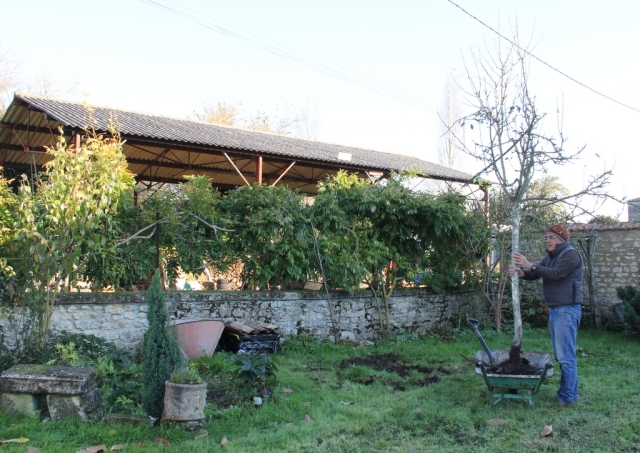


Cool fungi 😀
LikeLike
Thanks, I think you could really get into fungi round here but I’ve enough with the bees!
LikeLike
Amelia,
it was collecting dry leaves to put in a nesting place…
Wrens roost communally…
this quote is from the 2010 BTO winter survey…
” Results just in from the BTO’s Roosting Survey show that Wrens are piling into nest boxes, bespoke roosting pouches and even old House Martin nests to stay warm overnight, with most (26%) roosting in groups of 5–9 individuals and, in one nest box in snowy Devon, 30–34 individuals recorded snoozing together.”
[http://www.bto.org/news-events/press-releases/god_rest_chilly_gentle_wren]
LikeLike
Thanks for that! I’ll make sure I put out some bird houses in case they use those in the winter. One nested in the outbuilding this year so they must be able to find plenty of snug spots in there. (I missed your comment as my emails decided to go into spam all of a sudden, thus the late reply.)
LikeLike
I think your identification of the jelly fungus as Tremella mesenterica is probably correct, but there are many that look almost identical and it’s nearly impossible to tell them apart without a microscope. It’s a nice example though, no matter the species.
LikeLike
Thanks for that. I often find them on the branches that have been cut and left to dry out for burning on the fire.
LikeLike
I am glad the pear tree was easier to move than the cherry tree! Most pear trees seem to be prolific fruiters once they get established. Better start identifying pear recipes now 🙂
LikeLike
The pear tree was amongst the first trees we planted. Maybe it is a natural bonsai or it is on a very small root stock and we never noticed when we were buying it. It will be interesting to see what it does when its place is changed.
LikeLike
So many beautiful things to see in your garden. The toadstools are amazing.
LikeLike
Thanks. We’ve been really working hard and clearing the borders of plants that are taking up too much room. I am always looking for more room for plants that the bees like and they always do better in the sun.
LikeLike
Love the fungi pics, and the wren. I agree with NHG about the ID of the jelly fungus Tremella sp. There is no way of distinguishing it in a photo from another similar species we get here according to my myco friends.
LikeLike
Thanks for that. We get beautiful fungi around here but I rarely have the time to attempt even a genus ID.
LikeLike
You have a lovely big garden so well done for all your hard work! Your photos are beautiful too.
LikeLike
Thank you, we are hoping that the work now will pay off in the spring time.
LikeLike
I’m sure it will. I need to get on with some Spring bulb planting if I’m not too late!
LikeLike
Beautiful!
LikeLike
Thanks. I’m grateful the weather wasn’t too cold over all this last week so I could work outside comfortably.
LikeLike
Spectacular photos of the wren.
LikeLike
I see the wrens more in winter. I’m not sure why. Perhaps, when the leaves drop there is less cover but never the less they seem to fly more in the open areas in winter.
LikeLike
Hello,
I love the wren photos, and wonder if in France – or any of the other country’s you’ve seen wrens in, you’re aware of any mythology associated with wrens? There were some curious folk lore customs relating to wrens in rural Wales (12th night wren hunts and parades) that are now largely forgotten, and I know that Ireland also used to view the wren as being a special bird,
Best wishes
Julian
LikeLike
I’ve never heard of any stories associated with wrens. It always seems to catch my eye in the winter even more than the robin. They allows seem to be solitary, not like the flocks of sparrows, although they do sneak in and feed with our sparrows in the winter on the patio.
LikeLike
The fungus on the Hibiscus stump looks like honey fungus to me (I could be wrong). You should be careful what you plant nearby as it could attack and kill other trees and shrubs; you should probably try to remove the stump.
LikeLike
I’m so used to seeing toadstools around I never thought it could be dangerous. I shall deal with it rapidly. There is nothing else woody very close to it. Thank you for spotting it.
LikeLike
Gorgeous little Jenny Wren – one of my favourite birds! Our garden feels dull and neglected at the moment, it’s nice to see so much colour in yours.
LikeLike
I’ve just bought her a fat tablet with insects in it. I’ll have to experiment on where to put it for her delectation.
LikeLike
As always, we can enjoy the fruits of your toil without having to strain a muscle. I’d be very proud of all that! Pear tree move looks a good decision, good luck with that. And I think I see where the Boules pitch will go… Or do you prefer the rustic unconfined version over whatever course the thrower chooses? RH
LikeLike
Big confession – I’ve never played boules!
LikeLike
A post which really captures the season. Most of my work in the garden and on the allotment is done now for the year. I’ve retreated indoors to crochet and make seed lists. Wrens are one of my favourites. I occasionally catch a glimpse of them but they are so tiny. I thought it might be honey fungus too. It’s a little hard to tell though. Possibly best to be on the safe side.
LikeLike
I went straight out, removed the top growth to the fire, then proceeded to examine under the bark. Not anything to worry about. Then I looked for black boot lace hyphae under the ground. Sigh of relief. We still dug it completely out and consigned it to the fire – just in case.:)
LikeLike
Lots of work, all beautifully captured.
LikeLike
Thank you, and it continues – the work that is.
LikeLike
As always, a wonderful post that transports me into another world for a while. I am delighted by the comment above explaining that wrens roost communally. What a lovely sight that would be, several wrens all nestled together.
LikeLike
I’ve enjoyed the wrens as well and, like Rachael above, the comments that come after. You made me feel rather guilty because we didn’t ask for permission from the Mairie to burn our stuff (and I know you are supposed to!) Everyone seems to just get on with it round our way. The wrens really made my (rather depressing) Monday – thanks so much!
LikeLike
Sorry about making you feel guilty! Somebody has to go and get permission so that they can photocopy it and put it in their file otherwise the file would be empty 🙂
LikeLike